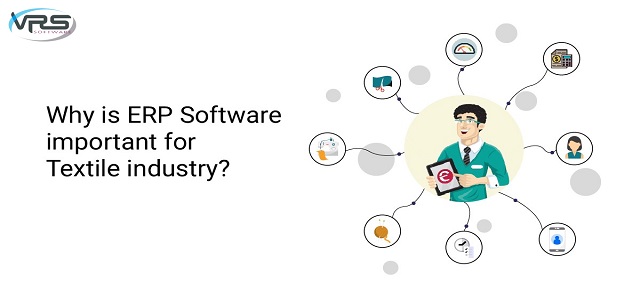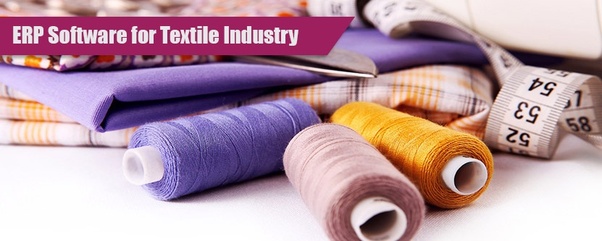ERP Software is Inventory & Finance software that is used in various sectors, from small to big. It becomes the most reliable asset in different sectors such as textiles, manufacturing, chemicals, food processing, automotive, construction, petroleum, and much more. Among these sectors. Not only is the textile industry restricted to manufacturing, but it is stored in inventory and distribution. Management of channels and sales, inventory management Quality management and control also plays a key role in the company. What if we inform you that with the assistance of an ERP scheme all these important processes can be automated?
Usually, the textile business faces issues in monitoring their inventory, planning material requirements, and manufacturing schedules for materials. A customized and comprehensive ERP solution offers a single interface for different modules such as production, sales, buy, inventory, accounting, distribution and other resources.
10 Benefits of Using ERP Software in Textile Industries Allows the Company to:
- Shop Floor Control
- Lot Traceability
- Quote and Quality Management
- Keep check on the Bill of Material (BOM) accounts
- Plan cash flow and track prediction positions.
- Interpret business conditions
- Provide efficient business information to help financial decisions monitor payment receipts
10 Benefits of the ERP Software Faced After ERP implementation by Textile Companies.
1. Reporting of MIS and financial data
To assist textile companies handle their economic information, customized ERP. It offers real-time transaction data that offers income, expenditures, excellent debts and seller fees for the company. It also enables reports from MIS such as balance reports, balance sheets as and when necessary.
2. Collaboration and communication
We do not want a company to operate independently from each other, tangled with each department. For centralized and coherent information, a correct communication channel and cooperation medium are needed. An ERP system affects every aspect of the company, thereby naturally promoting team cooperation.
3. Better Safety
Better safety of data should not be a concern if you have an ERP in location to take care of your textile requirements. Certainly, the new scheme will enhance data reliability, consistency, precision and safety through built-in resources and firewalls. The ERP system has always limited inappropriate information to prevent hackers and thieves being stolen.
4. Scalability
A well-structured ERP Software solution allows you to add fresh customers and features as your strategies alter. It ensures that any system additions will not impact your continuing activities. Your ERP system should be able to promote this development when your company grows and is prepared to develop.
5. Reduction in cycle time
ERP systems allocate equipment to particular clients in cycle time reduction and is essential to deliver as intended. It sometimes becomes hard to deliver as there is no material chance. ERP system facilitates the process in such instances by allowing you to manage such instances effectively.
6. Reduced downtime of equipment
Today, it is estimated that nearly 8 percent of machine downtime is linked to the lack of adequate raw material available. This is due to inefficient scheduling and communication obstacles when the right data is compiled. Thus, with an efficient provider selection module, ERP systems, as mentioned, can assist you reduce your equipment downtime.
7. Sales improvement
Repeated orders are placed by nearly 80% of clients. It has been observed that there are three variables affecting orders, i.e. price, order and distribution. An embedded ERP system will definitely assist to overcome these risk factors in the textile industry. Price is something that impacts most clients, so adequate study and analysis of competition is essential.
8. Dye House Management
Fabric price rises as a result of a lot of dyeing waste produced. An ERP system enables the management of dye house that offers chemical inventory, daily production report, batch management system, laboratory management, etc.
9. Customer Management
With automated procedures for capturing and storing client information, preferences and operations, client leadership becomes quiet simple. Customer tracking and increasing lifespan can keep your current clients involved and create your brand.
10. Database Integration
The most important advantage for your textile organization to deploy an ERP system is that it can be easily integrated with your current database without any problems. Only your demands are restricted to customization. It will readily mix with your present traditional scheme once the system is installed.
Conclusion
ERP software systems in the textile and fashion industries play an effective role. They have a clear benefit over other competitive firms. An optimal ERP solution will provide the company with greater ROI. In addition, by seamlessly incorporating with the merchandise, the solutions will transform the fundamental demands for retail companies.







